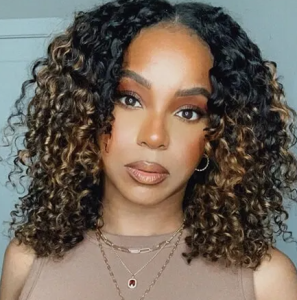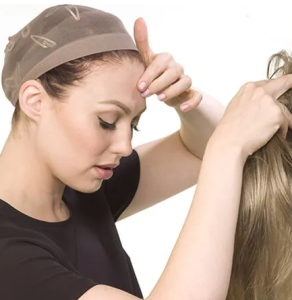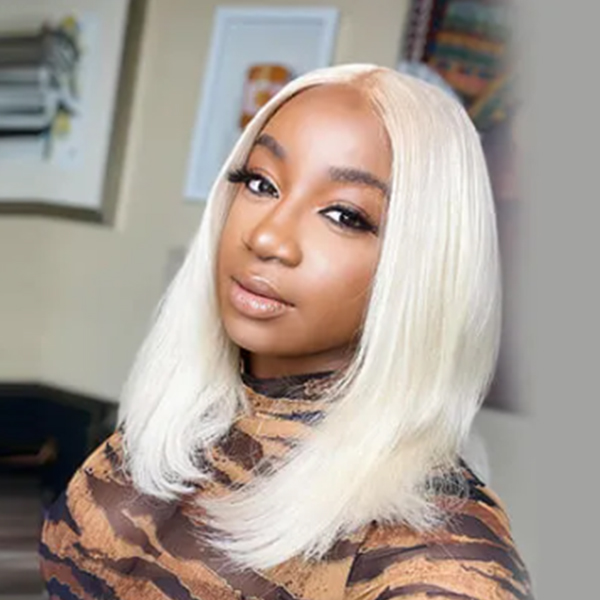Can Wigs Cause Traction Alopecia?
As we all know, wigs can bring the most natural look and even give people’s natural hair a break. But there is a common question among wig wears: Can wearing wigs damage your natural hair or cause traction alopecia? Today, we will give a professional answer in the following article.
Can Wigs Cause Traction Alopecia?
In fact, super tight wigs may cause traction alopecia as traction alopecia results from repeated excessive tension on hair follicles. For example, some wigs that require gluing or bonding may be likely to cause hair problems, especially if there is an unskilled person applying or people have sensitive skin.

That said, although lace front wigs and clip-in wigs can offer complete coverage of your natural hair, regularly wearing them also can cause hair damage, as well as thinning and eventual baldness in certain areas of the scalp.
More importantly, if not caught and corrected soon, this hair loss could be permanent. Therefore, it is essential for you to avoid wearing wigs that are too small or secured too tightly.
So how do you tell if you have traction alopecia?
Some Signs Of Traction Alopecia
Keep on reading to find out if what you’re suffering from is actually traction alopecia.
It is easy for you to tell if you are developing traction alopecia. Once you notice baby hairs along your hairline and above or behind your ears that are generally fine, sparse, and broken, it indicates you are suffering from gradual hair loss. Also, you also may notice redness or small bumps forming on your scalp where your hair is thinning.
There are some other signs of traction alopecia, too.
1. Irritated and tender scalp
Due to inflammation of the hair follicles, you may be experiencing a painful or itchy sensation on the scalp, even resulting in redness, bumps, and pimples forming on the scalp and flaking of the scalp.
2. A receding hairline typically around the forehead, temples, or nape
When you notice that your hairline has become patchy and see more of your scalp coming through, it means that hair is starting to break off or fall out from the tension being placed on the hair follicles.
3. Widening hair parting
Because of the weight or tension on the hair follicles, the hair will break off and fall out. In this case, you will notice that your hair parting is gradually becoming wider and wider and the gap between the two sides of the hair seems bigger and bigger.
4. Scarring
The scalp may appear scarred due to the tension on the hair follicles causing damage.
5. Blisters
In more extreme cases, you even will find pus-filled blisters on the scalp caused by extreme tugging on the hair that has damaged and wounded the hair follicles.
How To Prevent And Treat Wig Traction Alopecia
There is no denying that prevention is always better than cure. Thus, we especially make a list of how to prevent and treat traction alopecia. Here are some tips for preventing and treating wig traction alopecia:
1. Avoid Wearing Too Small Wigs

In order to effectively prevent or treat wig-related traction alopecia, you must avoid wearing human hair wigs that are too small.
If you secure your wig with an adjustable elastic band and combs, please ensure that the elastic is not tight.
Once you experience headaches or neck pains or notice small bumps on your scalp or hairline, you need to remove your wig immediately.
2. Opt For Some Protective Styles
Actually, the best treatment for traction alopecia is to opt for some protective styles that can minimize pulling on the scalp.
For instance, if you wear wigs that are attached using glue, clips, or tape, try to have a break in between each use, which can give your hair follicles time to heal and recover from all the tugging and pulling and could allow for the hair to regrow naturally before the hair loss becomes permanent.
3. Do A Hot Oil Treatment

Furthermore, it is a great option to use some essential oils on your hairline and in the sparse areas to stimulate the growth of your natural hair, such as castor oil, peppermint oil, and so on.
According to research, these natural oils are known to stimulate the hair follicles and promote hair growth if used regularly.
4. Wear A Wig Cap
When wrapping your hair up underneath the headband wig, it is best to use a wig cap to keep the hair in place. That is because a cotton or satin wig cap will prevent you from having to use too many clips and bands to hold up your hair and keep your hair underneath the wig more comfortably.

Not to mention that satin and cotton wig caps are gentle on the scalp and won’t pull on the hair as much. Now it is time to get a wig cap in the correct size!
5. Switch Up Your Hairstyle Regularly
To avoid continuous strain on the same area of your scalp, please make an extra effort to switch up the way you secure your hair underneath the wig.
Changing the way you secure your natural hair under the wig every week can spread out the strain on your scalp and reduce the rate of hair loss in one particular area.
6. Do Not Use Rubber And Elastic Bands
When you hold your natural hair up underneath the wig, nothing is better than avoiding using rubber and elastic bands. After all, these bands can easily tangle in your hair and pull it out as well as a cause too much strain on the hair follicles.
Instead, please try to apply some material hair ties that won’t pull on the hair too tightly.
7. Do Chemical Treatments As Less As Possible
It is so important to look after your hair underneath the wig. Thus, if you use weaves or braid your hair, avoid chemically treating your hair through coloring, bleaching, and relaxing treatments.
The chemicals used in these treatments will damage your hair and make it brittle and more prone to breakage when you wear your wig.
8. Eat Some Healthy Food

It is vital for you to get enough protein and iron, which can keep your hair healthy and promote the growth of your natural hair. For example, you can eat some beans, nuts, brown rice, meat, and leafy vegetables in your daily life.



